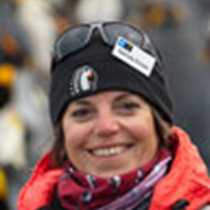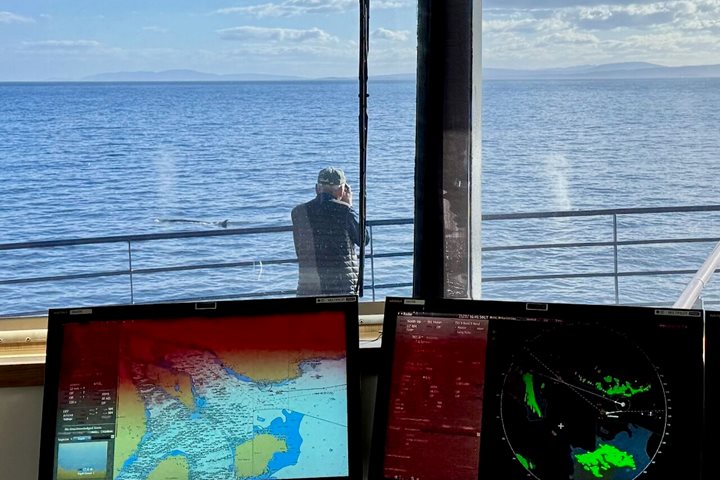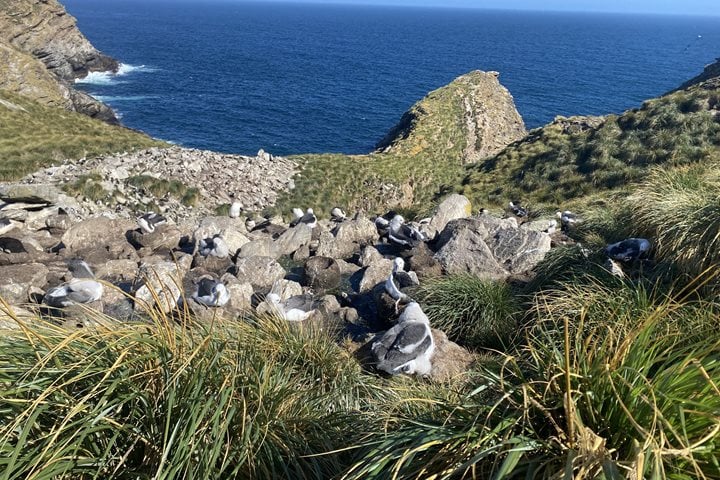A night of good sleep has energized our appetite for adventure. We have travelled to this remote corner of the South Atlantic to see its wildlife, and the Falkland Islands have delivered once again.
The day started at Carcass Island, located in the northwest of the archipelago. The morning sun was bathing the white sandy beaches and hills, exposing a palette of green, yellow, orange, deep blue, brown, and gray colors that compose the Falklands’ scenery. At the picturesque jetty we were greeted by tame tussock birds while curious rock cormorants watched us arrive. Nearby, a Magellanic penguin looked quite confused at the newcomers, posing for photographs while deciding if this was the right beach to settle in.
Hikers begun exploring the hillsides, venturing far and high. Others chose to walk up to the beach where there was plenty to be kept entertained. Photographic sessions were taking place almost everywhere, as the beach, the countryside, and the rural settlement provided plenty of opportunities. The striated caracaras were following us along the way, perhaps, waiting for a chance to fly away with a new hat.
Carcass is a privately owned island that has been farmed for decades by the McGill family, who graciously hosted us in their home. In traditional Falklands’ hospitality a morning tea was served, accompanied by a spread of cakes, sweet slices and scones, all baked for us on the island. Indoors or out in the garden, we gathered to enjoy our refreshments and to reflect on the simple beauty of these distant places.
As we approached West Point Island, we received a taste of the strong wind that characterizes this part of the world. We were keen to see the colony of black-browed albatross, which is situated on a spectacular cliff area, opposite to the landing site. As we walked towards the albatross colony we felt the wind in our faces getting stronger, and we gained an appreciation of the agility and strength of these birds to fly and glide in these gusty cold conditions. Our efforts paid off, hundreds of black-browed albatross fledglings were sitting on their nests waiting for the adults to deliver, perhaps, their last regurgitated meal before the youngsters leave the colony. Adults flew by, soaring over the coastline and landing near their young in very tricky maneuverings, as the nest pedestals were tightly packed with hungry birds. The fledglings still had some light-gray down covering parts of their body, looking as if they wore toupee-like ornaments on the head. Further down the cliffs, we are delighted to see a group of rockhopper penguins among the albatross’ nests. These are the smallest and most agile of all penguin species that breed in the Falkland Islands, which prefer the steep cliff sides when they are on land. These penguins have finished their breeding season and will soon depart out to sea for the winter.
In late afternoon, we returned to the comfort of the ship having had another successful day of exploration. But we must continue our path east, South Georgia Island awaits.







